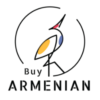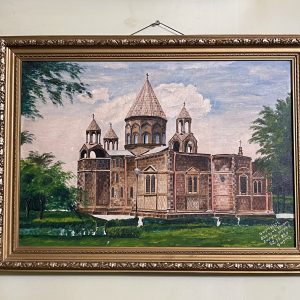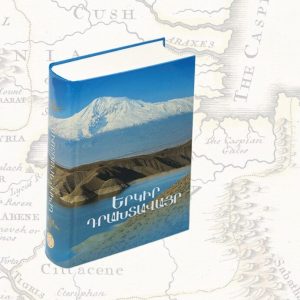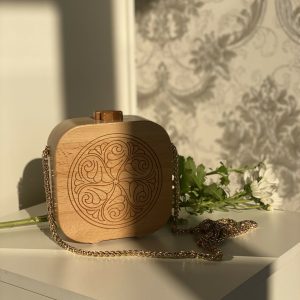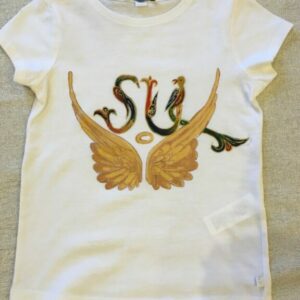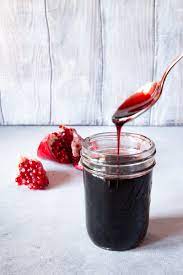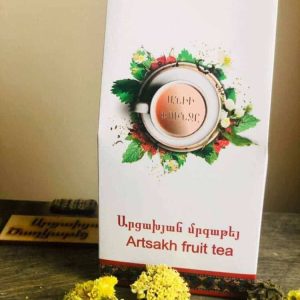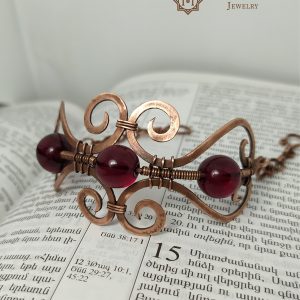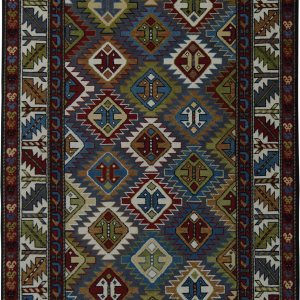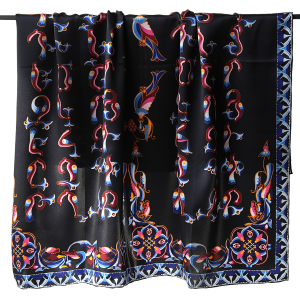-
Armenian church
Oil on cardboard
43 x 64 cm
Garush Grigoryan
20th century, Armenia$500.00Armenian church
$500.00 -
Handmade Men’s Leather Wallet
Dimensions: 9 x 11.5 cm (Closed), 9 x 22.5 cm (Open)
$36.00 -
“Country Paradise” Book
Գրքում տեղ են գտել ավելի քան 300 օտարերկրացի, մատենագիրների, ճանապարհորդների, քարտեզագիրների, պատմիչների, քաղաքական, ռազմական, պետական, կրոնական գործիչների, գիտության, մշակույթի գրականության անվանի ներկայացուցիչների բնութագրերը Հայաստանի և հայերի մասին: Գրքի հեղինակ-կազմողն է Ալբերտ Իսոյանը:
$15.00“Country Paradise” Book
$15.00 -
Cactus Leather Mini Bag
New ” Back to Roots” Collection inspired by Armenian Ancient carpet history.
Handcrafted by Armenian Artisans.
– Peta approved, organic Cactus leather
– Wear 3 ways- Crossbody/Shoulder/ Clutch
– Different interior and exterior colors
– Antique gold hardwares
– Long chain strap is included – 47.6″ L (with clasps)
– Ethically Handcrafted
– Dimensions: 4″H x 6.5″ W x 2″ D (please note: as it is handcrafted dimensions can vary)
– Plant based leather strap on request
– Dust bag included
– Care instructions: wipe with a soft, damp cloth$112.50$225.00Cactus Leather Mini Bag
$112.50$225.00 -
Փայտե պայուսակ 04
Նյութը՝ հաճարենի, բնական կաշի
Չափս՝ 16x16x7սմ
Պատրաստված է Հայաստանում։$110.00$120.00Փայտե պայուսակ 04
$110.00$120.00 -
-
Pomegranate Molasses
Made in Armenia from the juice of fresh pomegranates.
Pomegranate molasses contains antioxidants, mainly vitamin C, that is beneficial to your immune system. Pomegranates contain a higher amount of polyphenol antioxidants than most fruits. Pomegranate molasses contains several B vitamins including B1, B3, B5 and B6. Vitamin B1 or thiamin helps your body produce energy and is an aid to enzymes that help your muscles, cardiovascular system and nervous system. Vitamin B3 helps to maintain the health and vitality of your skin, nervous system and digestive system. Vitamin B6, or pyridoxine, helps your body break down the proteins you consume and maintains the health of your red blood cells that carry oxygen throughout your body so your hands don’t feel cold all the time!
Go Green Armenia’s molasses are basically the fresh juice boiled down until it is thick and dark. GGA has mulberry molasses, fig molasses, grape molasses, and pomegranate molasses to use as a sugar substitute. So enjoy the goodness of nature and stay healthy by using this 1 ingredient for a healthier you!$5.80 – $10.70Pomegranate Molasses
$5.80 – $10.70 -
Artsakh Fruit Tea
Ani’s bunch consists of dried pieces and flowers. Steep the tea for 5-7 minutes.
Net weight: 70 grams. Best before 2 years. Keep in a dry and cool place.
$4.70Artsakh Fruit Tea
$4.70 -
”Petak” Carpet
Handmade carpet made in Artsakh․ This carpet belongs to the series of traditional Armenian carpets.
Code: KC0420013
Size: 200 x 122 cm
Weight: 6.6 kg
Density: 32 x 32 (32 knots per 10 cm)
Node type: double (Armenian)$2,250.00”Petak” Carpet
$2,250.00 -
Armenian Carpet – Tag Gorg / Crown Carpet
Handmade carpet made in Artsakh․ This carpet belongs to the series of traditional Armenian carpets.
Technique: Handmade
Material: Wool
Node type: Double (Armenian)
Density: 32 x 32
Colors: Red
Made in: Artsakh (Armenia)
Weight (kg): 10.4
Size (sm): 276 x 121
Product code: KC0080050
This carpet has a certificate$3,100.00 -
“Trchnagir” Alphabet
The Armenian alphabet was created in 405 AD.
One of the greatest marks of the Armenian identity is the Armenian language. The exact origins of the Armenian language, however, are a little bit obscure. Such is the case with many ancient languages. Serious scholarship starting from the 19th century has placed Armenian among the wider family of Indo-European languages, although it forms its own separate branch within that group. So the language does not have any close relatives today, even Indo-European ones, such as Spanish and Portuguese or Russian and Polish might be considered.Armenian is also unique in its writing system. The Armenians use their own alphabet which was, by tradition, created following the studies and meditations of a monk, Mesrop Mashtots, in the early 5th century AD. Christianity had already been accepted as the national religion for a hundred years in Armenia, but the Bible was not yet available in the native language. The tradition goes that the main motivation to come up with a separate Armenian alphabet was in order to translate the Bible in such a way that would be accessible and suitable for the language and the people.
Mesrop Mashtots – who has since been venerated as a saint, as the patron of teaching and learning for Armenians – accomplished the task in the year 405 AD, thus setting the stage for a rich trove of works of religion and history, science and philosophy, illuminated manuscripts, and published books in the millennium and a half that followed, continuing on today. A major road in the capital of Armenia, Yerevan, is named for Mashtots, and one end of it is the apt location for the Matenadaran, the national repository of manuscripts which also functions as a research institute and museum.
$110.00“Trchnagir” Alphabet
$110.00
